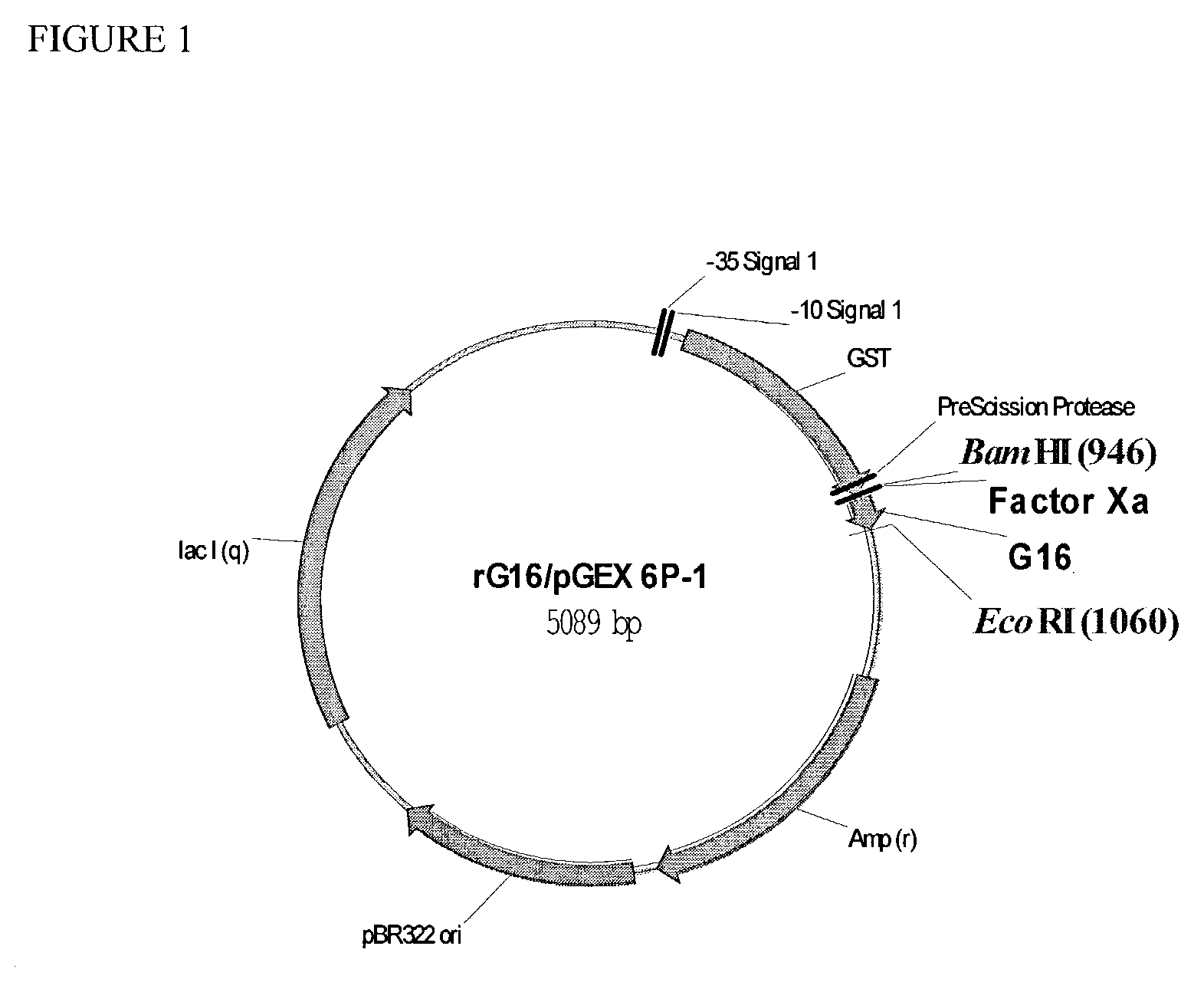Methods of treating type 2 diabetes with peptides acting as both GLP-1 receptor agonists and glucagon receptor antagonists
a technology of glucagon receptor and glp-1 receptor, which is applied in the direction of antibody medical ingredients, extracellular fluid disorder, metabolic disorder, etc., can solve the problems of limiting the effectiveness of insulin secretagogues, weight gain, and potential inducing hypoglycemia, so as to improve fasting glucose, reduce endogenous insulin secretion, and mild alteration of insulin secretion
- Summary
- Abstract
- Description
- Claims
- Application Information
AI Technical Summary
Benefits of technology
Problems solved by technology
Method used
Image
Examples
example 1
Peptide Synthesis Methodology
[0099]The following general procedure was followed to synthesize some of polypeptides of the invention. Peptide synthesis was carried out by the FMOC / t-Butyl strategy (Peptide Synthesis Protocols (1994), Volume 35 by Michael W. Pennington & Ben M. Dunn) under continuous flow conditions using Rapp-Polymere PEG-Polystyrene resins (Rapp-Polymere, Tubingen, Germany). At the completion of synthesis, peptides were cleaved from the resin and de-protected using TFA / DTT / H2O / Triisopropyl silane (88 / 5 / 5 / 2). Peptides were precipitated from the cleavage cocktail using cold diethyl ether. The precipitate was washed three times with the cold ether and then dissolved in 5% acetic acid prior to lyophilization. Peptide identity was confirmed by reversed-phase chromatography on a YMC-Pack ODS-AQ column (YMC, Inc., Wilmington, N.C.) on a Waters ALLIANCE® system (Waters Corporation, Milford, Ma.) using water / acetonitrile with 3% TFA as a gradient from 0% to 100% acetonitrile...
example 2
Peptide Cloning
[0100]To establish a robust method for expressing polypeptides of the invention and mutants thereof, nucleotide sequences encoding polypeptides were cloned C-terminal to GST with a single Factor Xa recognition site separating the monomeric peptide and GST. The gene encoding the Factor Xa recognition site fused to the DNA sequence of the peptide to be produced has been synthesized by hybridizing two overlapping single-stranded DNA fragments (70–90mers) containing a BamHI or EcoRI restriction enzyme site immediately 5′ to the DNA sequence of the polynucleotide to be cloned, followed by DNA synthesis of the opposite strands via the large fragment of DNA polymerase I (Life Technologies, Inc., Gaithersburg, Md.).
[0101]The DNA sequence chosen for each polynucleotide was based on the reverse translation of the designed amino acid sequence of each peptide. In some cases, the polynucleotide encoding the peptide is generated by PCR mutagenesis (Picard et al, Nucleic Acids Res 2...
example 3
Peptide Recombinant Expression and Purification
[0104]BL21 (DE3) cells (Stratagene) transformed with a GST-peptide fusion containing plasmids were grown at 37° C. until OD600 reached 0.6 to 1.0 and induced by 1 mM IPTG (Life Technologies) for 2 hours at 37° C. Two liters of cells were spun at 7,700×g for 15 minutes, and stored at −20° C. The cell pellet was resuspended in 80 ml B-PER bacterial protein extraction reagent (Cat No. 78248, Pierce) and 1× Complete Protease Inhibitor (Roche) until the cell suspension was homogenous. The homogenous mixture was gently shaken at room temperature for 10 minutes. Lysosome and Dnase I were added to a final concentration of 200 μg / ml and 10 μg / ml to further solubilize proteins and to reduce viscosity, respectively. The mixture was incubated for an additional 5 minutes. Cellular debris was spun down at 27,000 g for 20 minutes. The supernatant was mixed with 2 mL of pre-washed Glutathione Sepharose 4B resin (Pharmacia) on a shaker overnight at 4° C...
PUM
 Login to View More
Login to View More Abstract
Description
Claims
Application Information
 Login to View More
Login to View More - R&D
- Intellectual Property
- Life Sciences
- Materials
- Tech Scout
- Unparalleled Data Quality
- Higher Quality Content
- 60% Fewer Hallucinations
Browse by: Latest US Patents, China's latest patents, Technical Efficacy Thesaurus, Application Domain, Technology Topic, Popular Technical Reports.
© 2025 PatSnap. All rights reserved.Legal|Privacy policy|Modern Slavery Act Transparency Statement|Sitemap|About US| Contact US: help@patsnap.com

